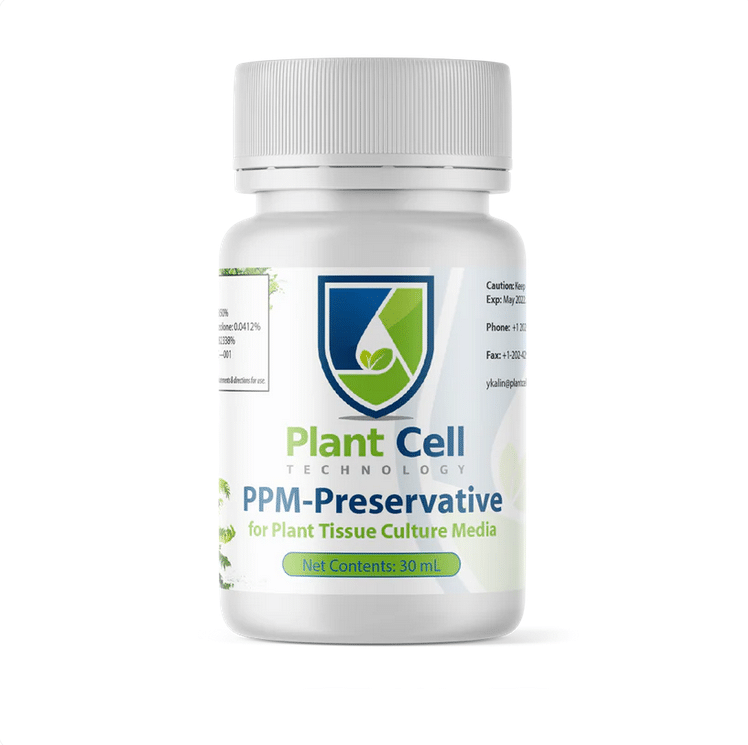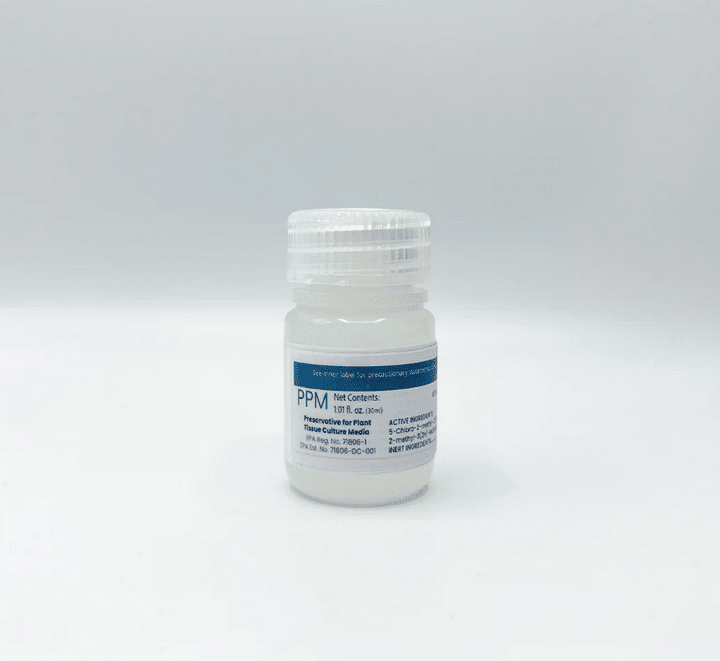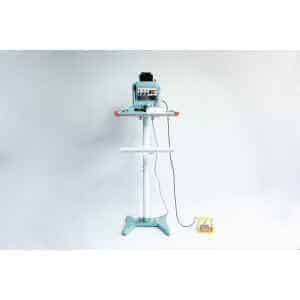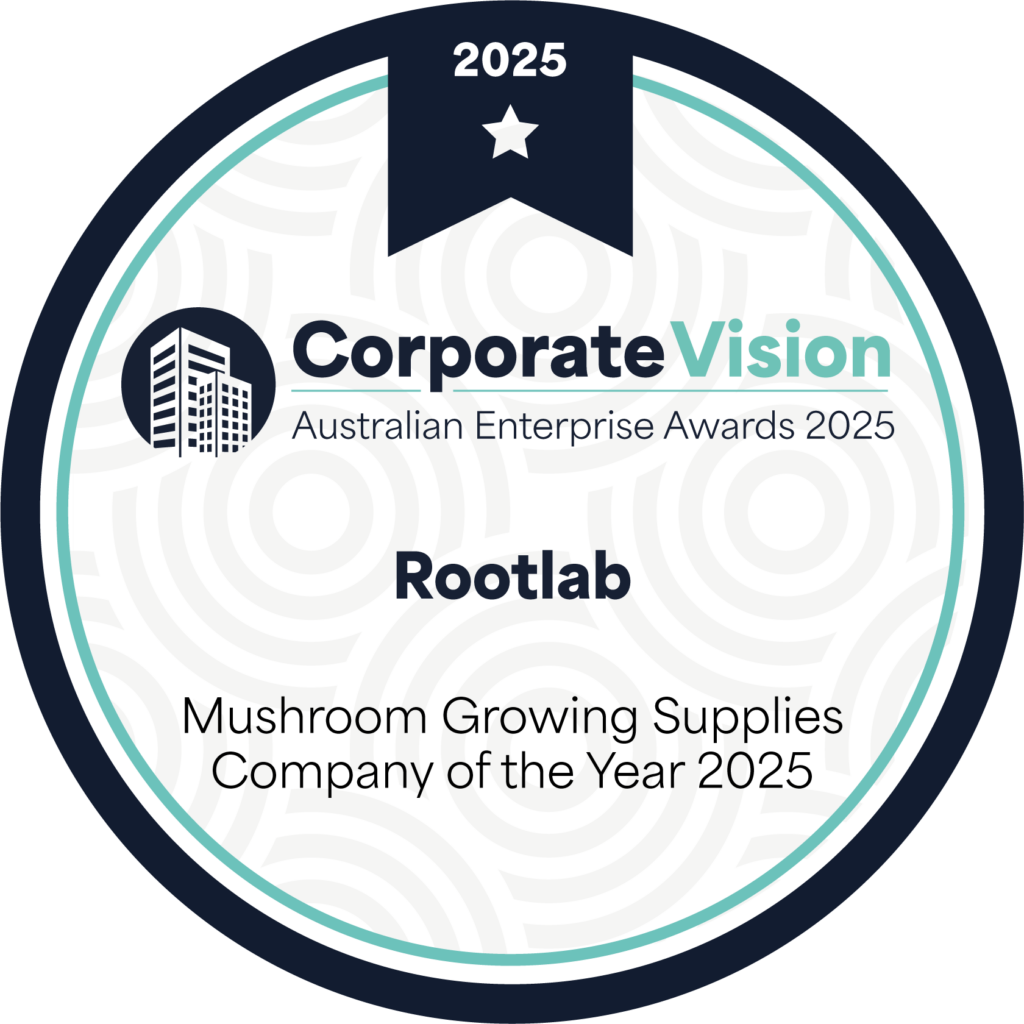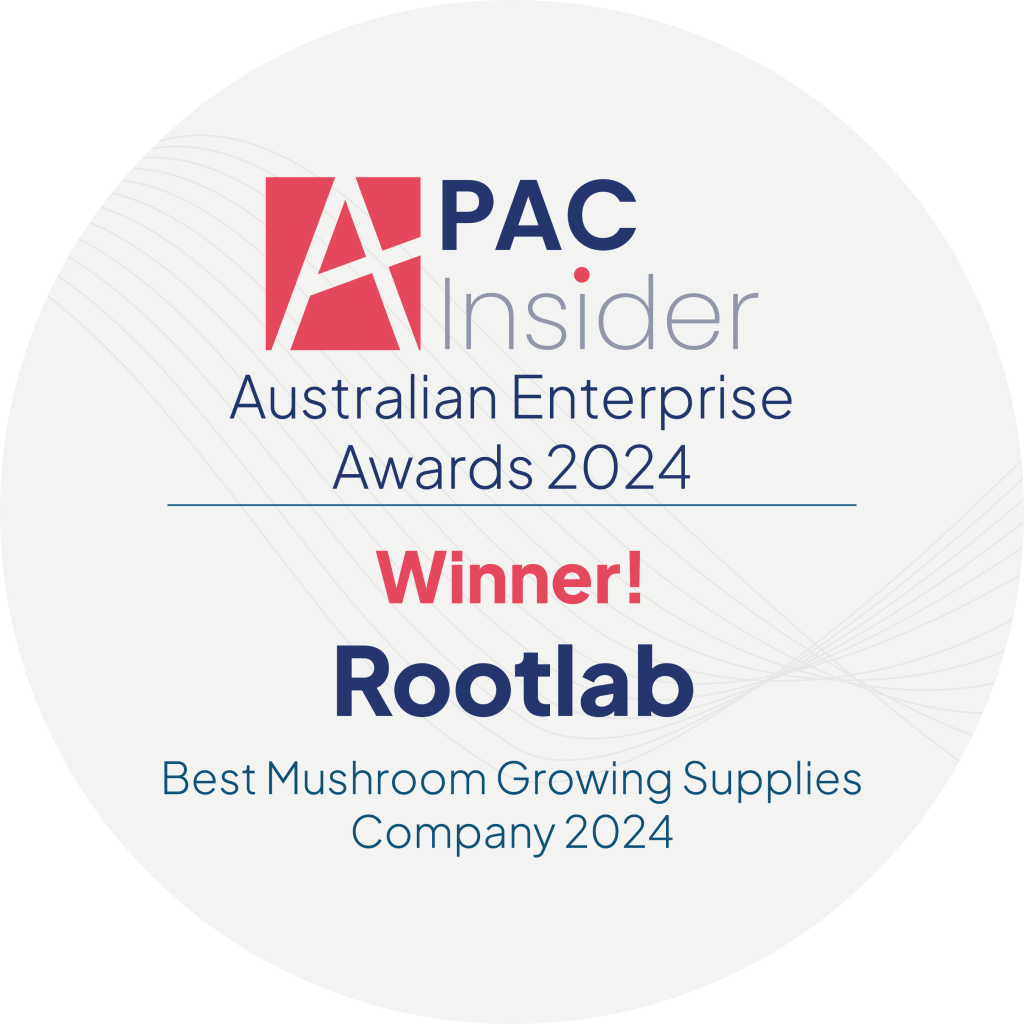Description
Plant Preservative Mixture (PPM™) is a versatile biocide specifically designed for plant tissue culture. It offers an effective solution to combat persistent microbial contamination from airborne, waterborne, and internal sources.
When used alongside proper aseptic laboratory practices, PPM™ significantly enhances the likelihood of achieving successful and flourishing culture experiments.
Advantages of Plant Preservative Mixture
- At optimal concentrations, PPM™—short for Plant Preservative Mixture™—serves as a highly efficient preservative and biocide. Remarkably, it does not hinder in vitro processes like seed germination, callus formation, or regeneration.
- PPM™ inhibits the germination of bacterial and fungal spores. Its heat stability allows it to be autoclaved with the media.
- As a recommended standard component of plant tissue culture media, PPM™ is also more cost-effective compared to commonly used antibiotics.
- While primarily designed to prevent airborne, waterborne, and human-introduced contamination, PPM™ can often be utilized to mitigate endogenous contamination as well.
- PPM™ ensures that the plant’s genetic profile remains unaffected.
Guidelines for Using Plant Preservative Mixture
General Dosage Recommendations
For most types of contamination, excluding endogenous ones, the advised dosage ranges from 0.05% to 0.2%. Specifically, for processes like callus proliferation, organogenesis, and embryogenesis, a dosage between 0.05% and 0.075% is suggested. Higher concentrations of PPM™ may be required to address severe endogenous contamination.
Managing Endogenous Contamination
- For explants: Submerge 1 cm (or smaller) explants in a 4-5% v/v PPM™ solution enriched with 3x MS basal salts (excluding Tween 20). Gently shake or stir them for 4-12 hours. Without rinsing, place the explants into a medium supplemented with 0.05-0.1% PPM™ for herbaceous plants or 0.2% PPM™ for woody species.
Note: Instructions from sections 6(b) to 10 apply exclusively to ornamental plants.
- For tubers, bulbs, and scales: Begin by shaking or stirring the entire tuber, bulb, or scale in a bleach solution. Rinse thoroughly under non-sterile conditions, then slice into thin sections. Submerge these slices in a 4-5% PPM™ solution containing full-strength basal salts (without pH adjustment or Tween 20) for 12-24 hours. Without rinsing, transfer them to a medium enriched with 0.1-0.2% PPM™.

